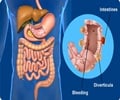What is the gender difference in obesity? The impact of a genetic variant associated with a higher abdominal fat distribution is high in women than in men.

‘A gene called SNX10 that controls the ability of fat cells was most strongly associated with the waist-to-hip ratio in women but not in men.’





In a new study published in Nature Genetics, researchers from the University of Chicago characterized the impact of a genetic variant associated with a higher waist-to-hip ratio, a measure of abdominal fat, that is necessary for the formation of fat cells in humans.This variant is also associated with higher cholesterol and triglyceride blood levels in women, but not men, and it contributes to excess fat accumulation as the result of diet in female mice, but not males, suggesting that similar genes might lead to different patterns of fat distribution and obesity-related disease risk for women.
Why Distribution of Fat Matters in Obesity Complications
The distribution of fat in the body seems to play an important role in the development of disease. More fat deposited in the abdomen and around vital organs has been linked to increased insulin resistance and inflammation and predicts a higher risk of cardiovascular disease, kidney failure, and stroke.The amount of abdominal fat is commonly measured by the waist-to-hip ratio, which divides a person’s waist measurement by their hip measurement. Ratios of 0.99 or lower for men and 0.90 or lower for women are considered healthy.
In the new research, researchers compared the genomes of hundreds of individuals to identify genes that are linked with obesity and a higher waist-to-hip ratio. The ratio is what is called a sexually dimorphic trait, meaning that it appears differently in males and females. Men and women naturally have different ratios, and the silhouette of an average man’s body is different from that of a woman.
The genetic analysis found 91 genes that help regulate fat distribution primarily in women. Most of the genetic variants associated with these genes don’t alter the sequence of the genes that code for proteins.
Jumping Genes for Metabolic Health
These so-called “jumping genes” may have wired fat distribution patterns in humans, with implications for metabolic health in women. The researchers next focused on a gene called SNX10, which was most strongly associated with the waist-to-hip ratio in women but not in men.Advertisement
The team also searched the UK Biobank, a GWAS database containing more than 700,000 genomes, and found that not only is SNX10 linked to a higher waist-to-hip ratio in women, but it is also associated with higher levels of cholesterol and triglycerides, which are commonly associated with cardiovascular disease.
Advertisement
Source-Eurekalert















